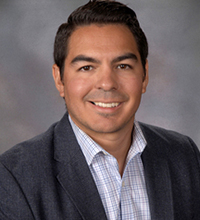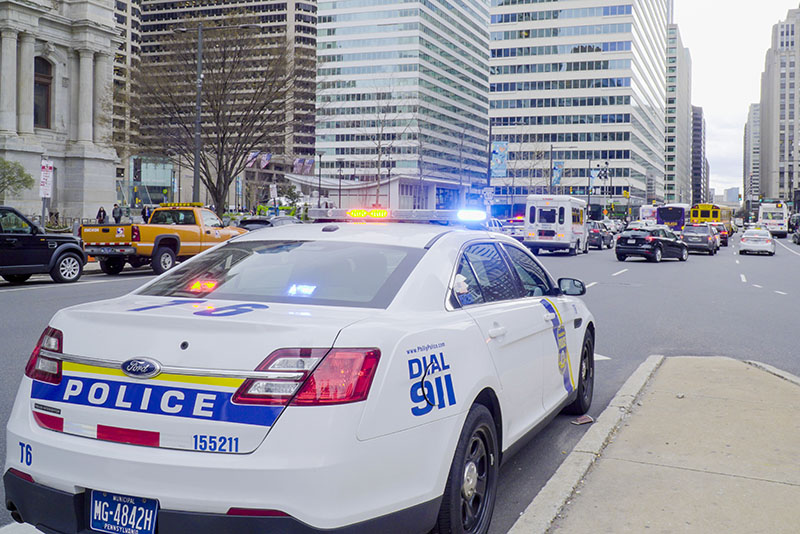We know that there is no single explanation for the drop in gun violence. Rather, many factors at both the local and national levels could be playing a role.
Philadelphia experienced a surge in shootings and homicides during the Covid-19 years that disproportionately affected young Black and Latino men in economically disadvantaged neighborhoods with drug markets.
In 2020, Philadelphia had 499 homicides – nearly 150 more than the previous year. Gun violence worsened in 2021 – with 562 homicides that year – and then dropped slightly in 2022.
Fortunately, recent data shows a notable decline in these crimes over the past two years. As of late September 2024, homicides are down 40% for the year to date compared with 2023. And the number of shooting victims has decreased similarly – from 1,236 in the first eight months of 2023 to 758 for the same period in 2024.
As professors of criminal justice who live in Greater Philadelphia, we know that there is no single explanation for the drop in gun violence. Rather, many factors at both the local and national levels could be playing a role.
Police and justice system return to (sort of) normalcy
A shortage of police – driven by pandemic-era resignations, retirements and injuries – significantly affected cities like Philadelphia.
Additionally, the Philadelphia Police Department’s number of traffic and pedestrian stops dropped drastically. This was due to both the need to adhere to social distancing guidelines during the Covid-19 pandemic, and a widespread reluctance among officers to engage with citizens after massive protests in response to the murder of George Floyd. In fact, the number of documented stops plummeted by 83% from 2019 to 2020 alone.
As the year progressed, the Department struggled with officers’ abuse of the Pennsylvania Heart and Lung Act. This state-wide disability program allows police and firefighters injured on the job to collect their full salaries.
The Philadelphia Police Department has attempted to increase its ranks through intensified recruitment efforts. It also lowered physical requirements and eliminated certain residency restrictions. Despite these efforts, staffing remains nearly 20% lower than in 2019.
By September 2021, 14% of Philadelphia patrol officers were out of work on ‘no duty’ disability leave, according to investigations by both The Philadelphia Inquirer and the city controller.
Though up-to-date data is unavailable, there was a 31% drop in injury claims by December 2022, 10 months after the Inquirer investigation was published.
More recently, the Philadelphia Police Department has attempted to increase its ranks through intensified recruitment efforts. It also lowered physical requirements and eliminated certain residency restrictions.
Despite these efforts, staffing remains nearly 20% lower than in 2019. This places considerable strain on the existing workforce.
Of course, the Covid-19 years considerably affected the entire criminal justice system and beyond in Philadelphia. Courts operated in a limited capacity, cases backlogged, probation and parole officers were less able to supervise individuals in the community, and the jail population was reduced. The city’s array of community- and hospital-based violence intervention programs were also disrupted.
The post-pandemic resumption of court operations, improved violence intervention programs, police recruitment efforts and reduced disability claims may help explain the recent drop in shootings.
New leadership and crime-fighting strategies
Reducing gun violence was a top campaign issue during Philadelphia’s 2023 mayoral race. Mayor Cherelle Parker, elected on a law-and-order platform, declared a public safety emergency on her first day in office.
She also appointed Kevin Bethel as Police Commissioner in charge of the more than 6,000-member force. Bethel, second in command under former Commissioner Charles Ramsey, quickly released a 100-day plan that focused on crime reduction in high-crime districts, shutting down open-air drug markets in Kensington and reinforcing federal partnerships to tackle violent crime.
In 2021, only 17% of non-fatal shootings led to arrests, a failure that can fuel retaliatory violence, legal cynicism – which refers to a drop in trust of the legal system – and communities resorting to self-policing.
Philadelphia has also adopted new policing strategies and technologies. In early 2022, before Parker and Bethel’s tenure, the Philadelphia Police Department under former Commissioner Danielle Outlaw designated a new unit to investigate non-fatal shootings.
In 2021, only 17% of non-fatal shootings led to arrests, a failure that can fuel retaliatory violence, legal cynicism – which refers to a drop in trust of the legal system – and communities resorting to self-policing.
While it’s not yet clear what effect the new unit has had in Philadelphia, research shows such units that prioritize resources to solving non-fatal shootings in places such as Boston and Denver have reduced gun violence.
More recently, the city began deploying mobile surge teams on weekends to flood high-crime areas with officers to deter potential criminal activity.
Meanwhile, Temple University attributes the reduction in crime within its patrol areas to the implementation of safety measures, including new equipment for officers such as firearms and radios, upgraded security cameras, and advanced technology such as license plate readers, which help identify stolen vehicles or those linked to criminal behavior.
National crime trends
While local initiatives have likely contributed to Philadelphia’s drop in violent crime, these improvements also fit into national crime trends as cities across the US experienced similar declines.
Economics and public safety expert John Roman, for example, attributes both the rise and fall of violence to pandemic-related losses in government staffing and functionality, which he argues returned to pre-pandemic levels in late 2023.
In Philadelphia, approximately 3,000 local government jobs were lost between 2019 and 2022. The reopening of social services and increase in those jobs and community-based interventions post-pandemic may have helped stabilize Philadelphia’s neighborhoods.
Roman shows how 1.3 million government jobs were lost nationally at the outset of Covid-19, with 75% of the losses coming at the local level. These local government employees, such as social and outreach workers, often connect people in marginalized communities that bear the brunt of gun violence to crucial services such as trauma counseling, victim advocacy and legal assistance.
In Philadelphia, approximately 3,000 local government jobs were lost between 2019 and 2022. The reopening of social services and increase in those jobs and community-based interventions post-pandemic may have helped stabilize Philadelphia’s neighborhoods.
Crime trends tend to ebb and flow. This current drop appears to align with a national de-escalation in violent crime. These factors, alongside the statistical phenomenon of regression to the mean – where crime rates normalize after extreme spikes – apply to both national and local crime rates.
Some researchers, including Roman, have also considered the possibility that the recent 2020-2022 homicide peak killed a portion of the most violent offenders who drive shootings in their neighborhood. It’s based on the concept of the victim-offender overlap that those at the highest risk of violence are often offenders themselves.
But crediting Philadelphia’s decline in homicides and violent crime to any single cause oversimplifies a much more intricate picture. While the exact causes of these shifts are complex, understanding the interplay of local and national forces is essential to sustaining this positive trajectory.
This article first appeared on The Conversation, and is republished under a Creative Commons Licence; you can read the original here.
About the Authors
 Dr Carla Lewandowski is an Associate Professor of Criminal Justice at Rowan University, and holds a PhD and MA from the University of Pennsylvania, an MS from Oxford University, and a BA from Princeton University. Her research focuses on homeland security, terrorism, and policing. She is the co-author of Extremism in the Police: A Reference Handbook and co-editor of Criminal Justice in America: Crime, Law Enforcement, Courts, and Corrections. Dr Lewandowski has published extensively on fusion centers, examining their role in information collection and dissemination. She teaches courses on International Terrorism, Race, Class, and Ethnicity in Criminal Justice, and an introductory criminal justice course.
Dr Carla Lewandowski is an Associate Professor of Criminal Justice at Rowan University, and holds a PhD and MA from the University of Pennsylvania, an MS from Oxford University, and a BA from Princeton University. Her research focuses on homeland security, terrorism, and policing. She is the co-author of Extremism in the Police: A Reference Handbook and co-editor of Criminal Justice in America: Crime, Law Enforcement, Courts, and Corrections. Dr Lewandowski has published extensively on fusion centers, examining their role in information collection and dissemination. She teaches courses on International Terrorism, Race, Class, and Ethnicity in Criminal Justice, and an introductory criminal justice course.
 Dr John Shjarback is an Associate Professor in the Department of Law and Justice Studies at Rowan University. He earned his Ph.D. in Criminology and Criminal Justice from Arizona State University, and has published approximately 30 peer-reviewed articles, book chapters, and technical reports on topics broadly related to transactional violence between police officers and citizens, race/ethnicity, and accountability. He has collaborated with a number of law enforcement agencies and practitioners on various projects and evaluations, and his research has impacted policy and informed data collection efforts.
Dr John Shjarback is an Associate Professor in the Department of Law and Justice Studies at Rowan University. He earned his Ph.D. in Criminology and Criminal Justice from Arizona State University, and has published approximately 30 peer-reviewed articles, book chapters, and technical reports on topics broadly related to transactional violence between police officers and citizens, race/ethnicity, and accountability. He has collaborated with a number of law enforcement agencies and practitioners on various projects and evaluations, and his research has impacted policy and informed data collection efforts.
Picture © 4kclips / Shutterstock



The whole of the US is on course for a significant drop in homicides this year, even though mass shootings have been running higher. ‘Conventional’ crime, including violence and theft is also generally falling across many Western countries. Unfortunately, it doesn’t suit the political rhetoric to say crime is down, and the public doesn’t trust the stats anyway. However, good policy decisions should be made on the science and data, I suggest. From a criminological perspective, the focus should probably be on places where crime is not falling or still rising – and try to understand why they are bucking the national/international trend.